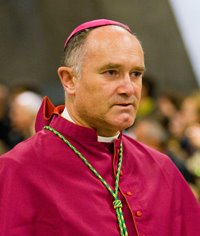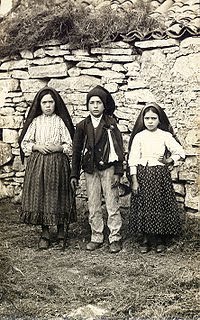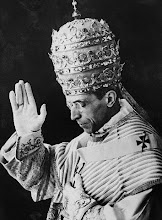“In the old
days the priest said Mass with his back to the people.” The priest never had his back to the people. When churches began to be built in the early
centuries of Church history, they were constructed in such a way that when the
priest offered Mass he would be facing east.
The people would face east as well.
Priest and people would face east together. If east on a compass was impossible, priest
and people would face “liturgical east”. Facing east together was what was most
important.
What is so important about facing
east? First, the sun rises in the
east. The rising sun of the universe
would be a reminder of the risen Son who created the universe. Nature itself speaks to us, remind us of the
resurrection of Christ. Second, there is
a tradition that when Christ returns at the end of the world, He will come from
the east. Saying Mass with both priest
and people facing east is a way for us, His people, to be ready and waiting to
meet Him when He comes. It is a way to
express eager expectation of His return.
(Some cemeteries even bury the dead and have headstones facing east for
the same reason). At Christmas, the Wise
Men saw the Star of Bethlehem rise in the east to announce the Messiah’s
coming. A sign in the sky from the east
will also announce the Messiah’s second coming.
 |
| Graves facing the east awaiting the Messiah's return |
The reason why priest and people faced
the same direction during Mass also relates to the specific role of the
priest. The priest is the spiritual
leader of the people. The priest is
entrusted with being like a good shepherd, who helps lead and guide the flock
towards Christ. Since Christ will come
from the east, it makes perfect sense that both the priest and people turn
together towards the east, and that the priest be out in front leading the
flock toward their ultimate Good Shepherd.
General George Washington always got out in front of his soldiers and
led them in battle. No soldier complained
about Washington having his back to them as he led them in battle. Similarly, no one complains when a pilot, the
leader of passengers, has his back to the people when he pilots the plane. They are happy he is focused on their
destination. The priest is like a
general or a pilot, in that he is a spiritual leader of the people. It makes sense that both priest and people
face towards the east together, and that the priest lead them to their ultimate
destination, to God.
Other things to consider: When the
priest and people face the same direction, their souls and bodies are oriented where
they should be – towards the Lord. When
the priest and people face each other, a danger that could occur is that
instead of being focused on God, the priest and people are focused in on each
other and Mass can become worship of self and of human achievement, rather than
a worship of God and focus on Him alone.
Today, with priest and people facing each other, how often is there
applause during Mass for some human accomplishment? How often is Mass focused on a specific group
of people? How often did this occur when
the priest and people faced the same direction and focused on God alone?
 |
| Take your pick ... This one |
With priest and people facing each
other, the priest can subconsciously feel he is on a stage, rather than in a
sanctuary and that he has to try to be humorous or somehow interesting to the
people. When the priest faces the same
direction as the people, his face is unseen and his individuality is
diminished. This helps the people and the priest. It helps the people focus on God alone and
helps the priest suppress his own personality, driving home that he is a slave of
God and the Mass, not the main character in a stage production.
“In the old days the priest said Mass
with his back to the people.” Absolutely
false! This gives the impression that
the priest was haughty or that the people were excluded. Rather priest and people faced the same
direction, faced towards the Lord.
 |
| Or this one? |
















No comments:
Post a Comment